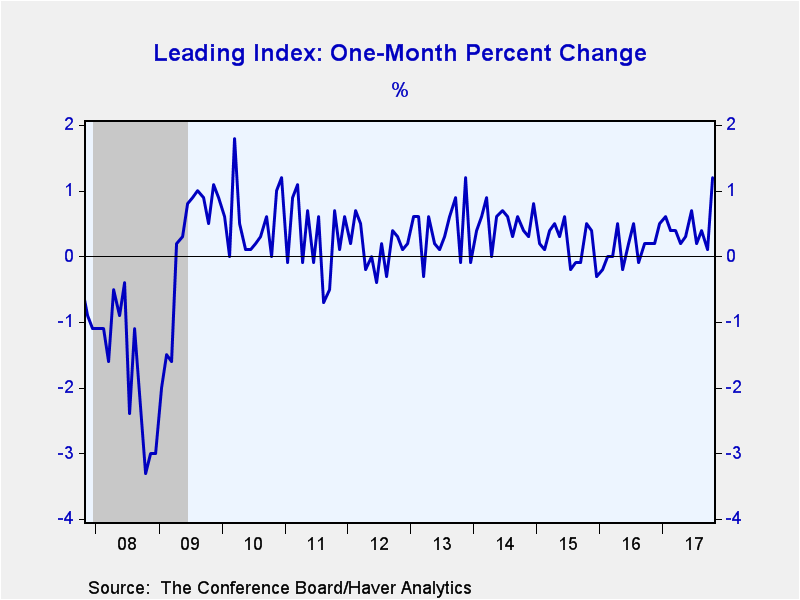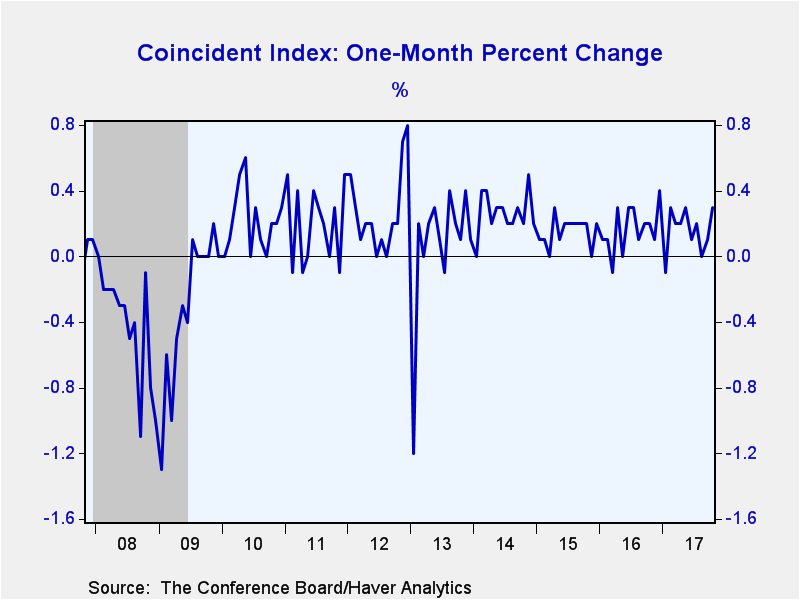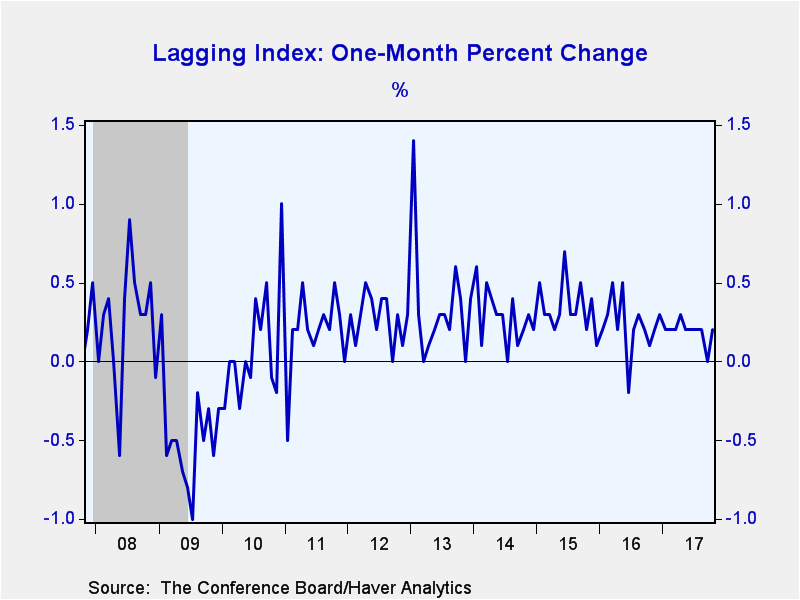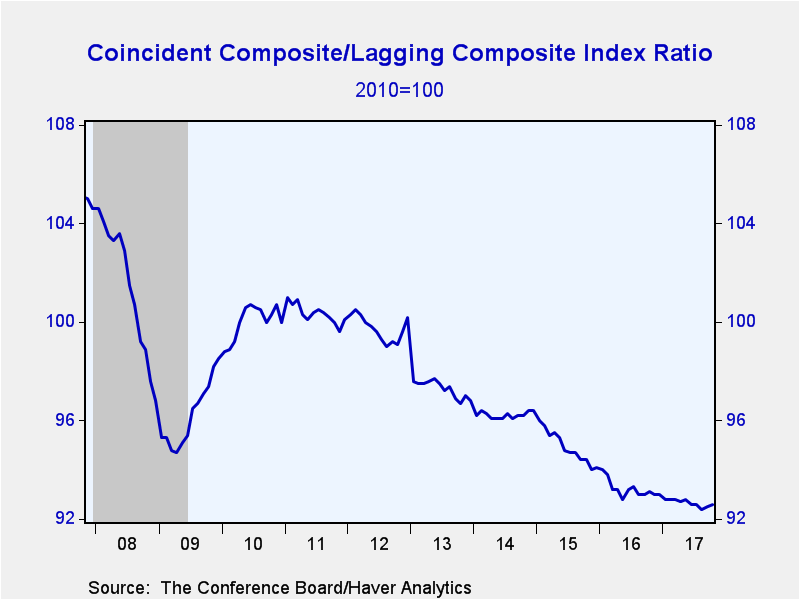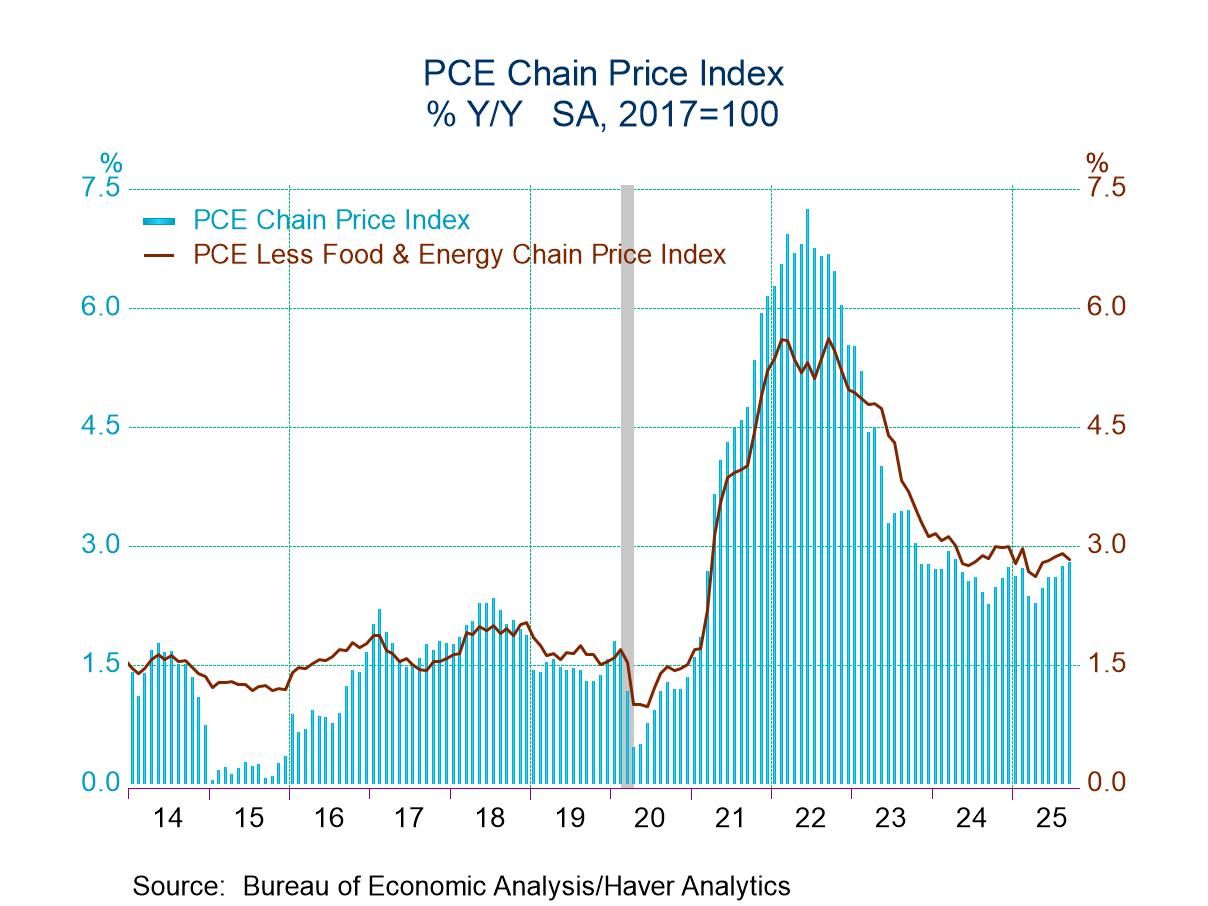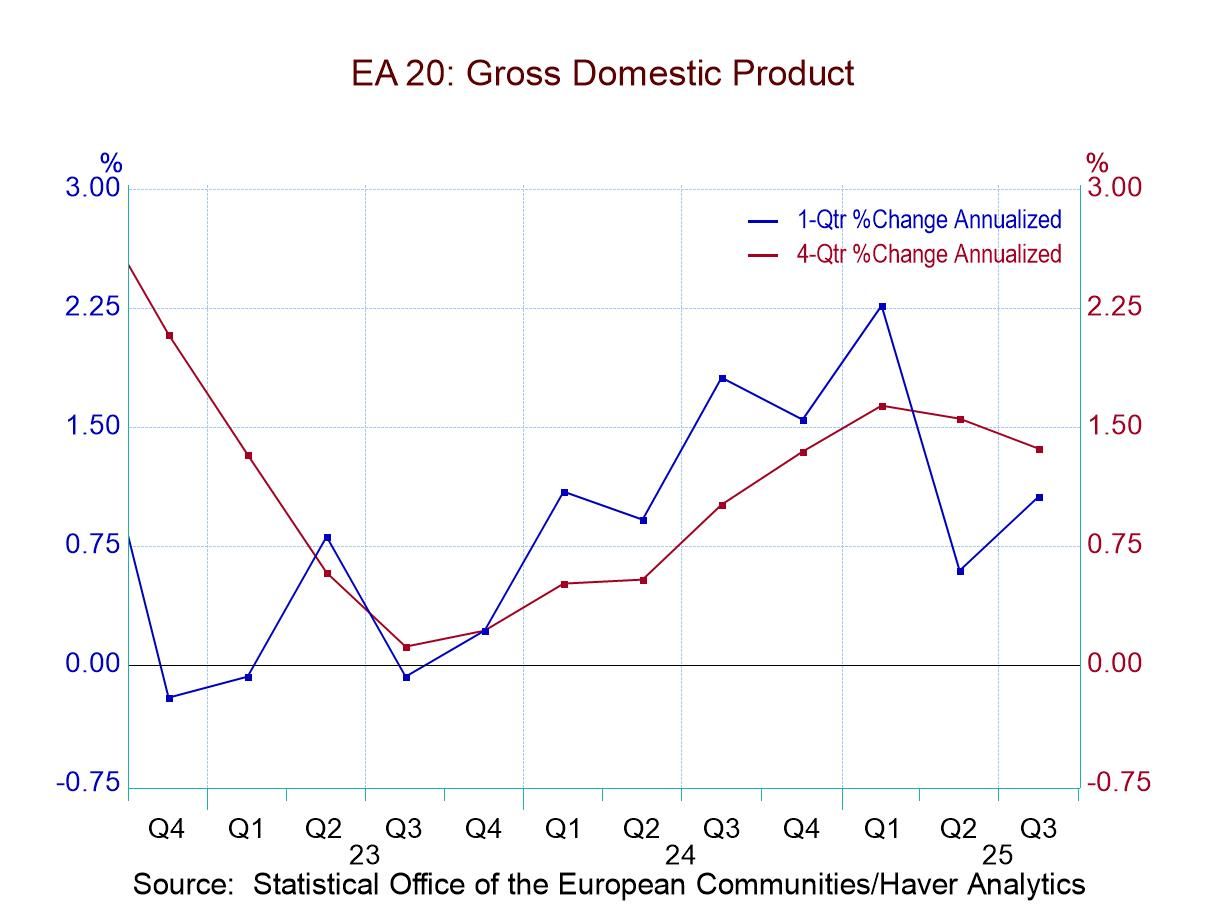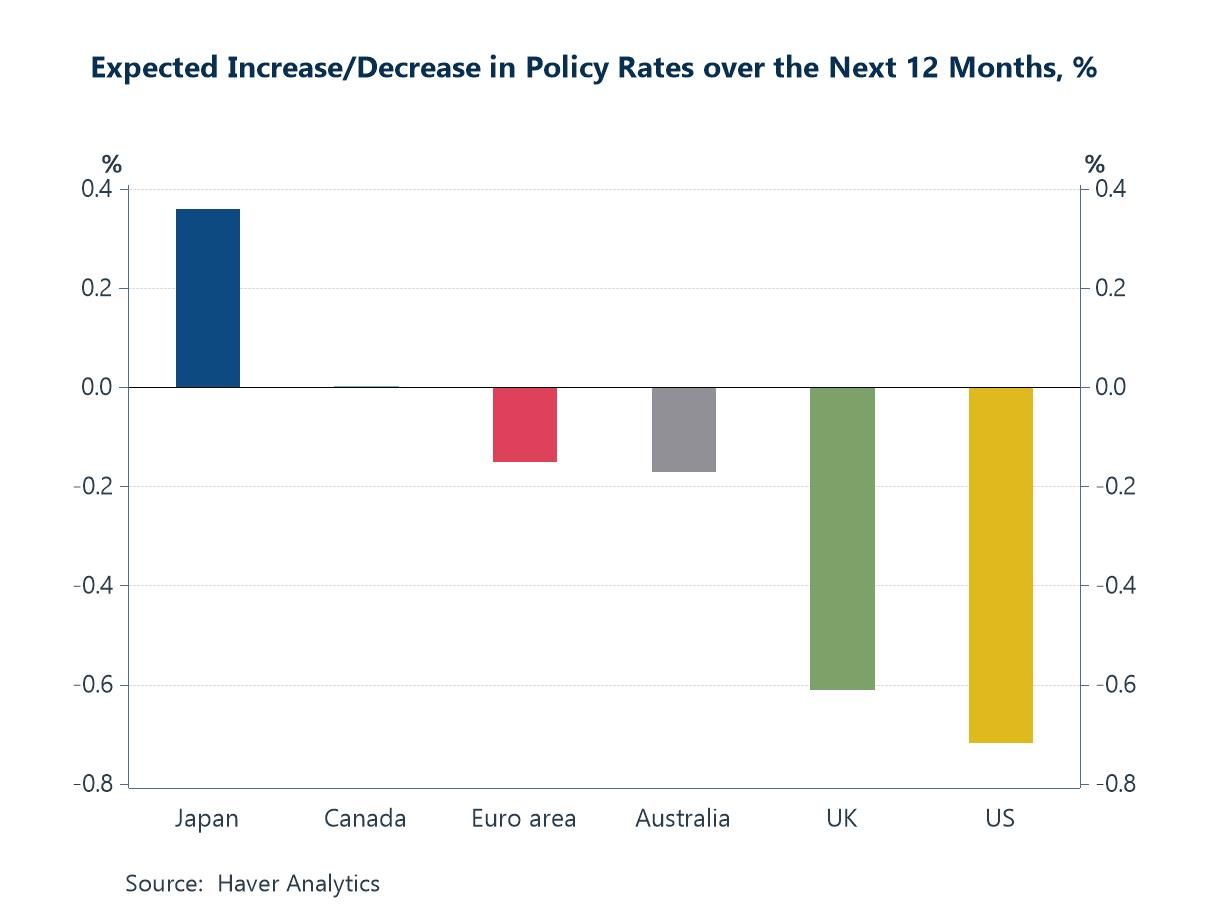 Global| Nov 20 2017
Global| Nov 20 2017U.S. Leading Economic Indicators Surge
by:Tom Moeller
|in:Economy in Brief
Summary
The Conference Board's Composite Index of Leading Economic Indicators jumped 1.2% during October following a 0.1% September rise, revised from -0.2%. It was the strongest monthly increase since November 2013 and occurred as hurricane [...]
The Conference Board's Composite Index of Leading Economic Indicators jumped 1.2% during October following a 0.1% September rise, revised from -0.2%. It was the strongest monthly increase since November 2013 and occurred as hurricane effects on the economy subsided. A 0.5% rise had been expected in the Action Economics Forecast Survey. Three-month growth in the index strengthened to 6.7% (AR) from 2.8% in September.
Performance amongst the components of the leading index broadly improved, led by a decline in weekly unemployment insurance claims. This accounted for nearly half of the total's increase. The ISM new orders index, building permits, the interest rate spread between 10-Year Treasuries & Fed Funds, consumer expectations for business/economic conditions, stock prices, consumer goods orders and the length of the average workweek also registered positive effects. Nondefense capital goods orders contributed negatively.
The Index of Coincident Economic Indicators increased 0.3% (1.9% y/y) following an unrevised 0.1% uptick in September. Each of the component series, including industrial production, personal income less transfer payments, business sales and payroll employment, contributed positively to the index. Three-month growth in the index rose 1.7% (AR), its best in three months.
The Index of Lagging Economic Indicators rose 0.2% (2.5% y/y) following no change in September, revised from -0.1%. A longer average duration of unemployment had a sharp positive effect on the index as it bounced back from a September decline. Commercial & industrial loans outstanding and the change in the services CPI also had positive effects, while other series were little changed. Three-month growth of 1.9% in the lagging index was reduced from nearly 3.0% early in the year.
The ratio of coincident-to-lagging indicators is often considered to be a leading indicator of economic activity. As economic slack diminishes relative to current performance, the ratio will rise. It improved slightly last month to the highest level in three months.
The Conference Board figures are available in Haver's BCI database; the components are available there, and most are also in USECON. The expectations are in the AS1REPNA database. Visit the Conference Board's site for coverage of leading indicator series from around the world.
| Business Cycle Indicators (%) | Oct | Sep | Aug | Oct Y/Y | 2016 | 2015 | 2014 |
|---|---|---|---|---|---|---|---|
| Leading | 1.2 | 0.1 | 0.4 | 5.2 | 1.2 | 4.4 | 5.6 |
| Coincident | 0.3 | 0.1 | 0.0 | 1.9 | 1.6 | 2.3 | 2.5 |
| Lagging | 0.2 | 0.0 | 0.2 | 2.5 | 3.4 | 3.7 | 3.6 |
Tom Moeller
AuthorMore in Author Profile »Prior to joining Haver Analytics in 2000, Mr. Moeller worked as the Economist at Chancellor Capital Management from 1985 to 1999. There, he developed comprehensive economic forecasts and interpreted economic data for equity and fixed income portfolio managers. Also at Chancellor, Mr. Moeller worked as an equity analyst and was responsible for researching and rating companies in the economically sensitive automobile and housing industries for investment in Chancellor’s equity portfolio. Prior to joining Chancellor, Mr. Moeller was an Economist at Citibank from 1979 to 1984. He also analyzed pricing behavior in the metals industry for the Council on Wage and Price Stability in Washington, D.C. In 1999, Mr. Moeller received the award for most accurate forecast from the Forecasters' Club of New York. From 1990 to 1992 he was President of the New York Association for Business Economists. Mr. Moeller earned an M.B.A. in Finance from Fordham University, where he graduated in 1987. He holds a Bachelor of Arts in Economics from George Washington University.


